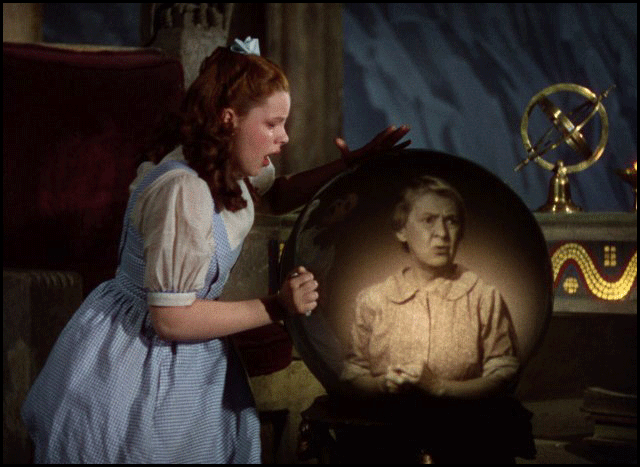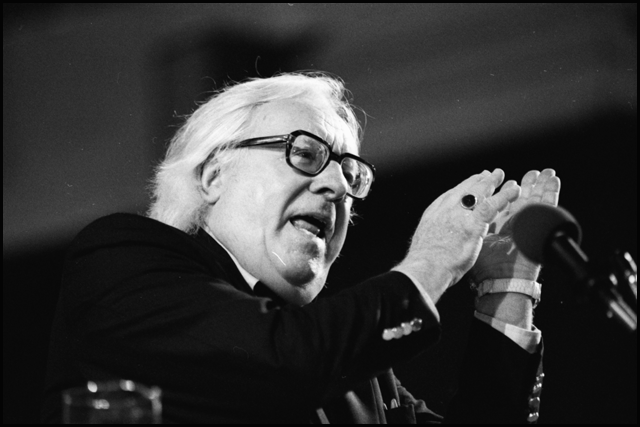The search strings that bring people to my website have once again provided an intriguing issue for me to consider. In this case, the matter for examination is temptation. The actual question was: “Is Dorothy tempted?” I think it is a safe assumption to make that it means Dorothy Gale in The Wizard of Oz.
I’m going to use the classic 1939 film version to address this, because that is the version more people know.


First off, to review the definition of temptation, as covered in The Scribbler’s Guide to the Land of Myth, it has to appeal to a genuine desire in the Hero. There’s not much point in dangling something in front of the Hero to distract him if it does not attract him first. So, to discover what tempts a character, look to what that character desires.
 Early in the film, Dorothy dreams about the world beyond Kansas, even “over the rainbow.” The desire to be somewhere else is a strong one for her. So, when Toto’s existence is threatend by Miss Gulch, Dorothy gives into temptation to run away with the endangered dog. She flees what she fears, but tells herself she is just seeking the “adventure elsewhere” she had been dreaming of.
Early in the film, Dorothy dreams about the world beyond Kansas, even “over the rainbow.” The desire to be somewhere else is a strong one for her. So, when Toto’s existence is threatend by Miss Gulch, Dorothy gives into temptation to run away with the endangered dog. She flees what she fears, but tells herself she is just seeking the “adventure elsewhere” she had been dreaming of.

The traveling “Professor” Dorothy encounters, a fraudulent but perceptive fortune teller, helps her counter the adventure-seeking temptation by getting her to imagine the consequences of her flight on those she loves, especially her Auntie Em.

In this, she is made to turn back and accept that she will have to face what she fears (Miss Gulch and the possible loss of Toto) in order to “save” what she loves, her Aunt Em. This choice, made in the face of temptation, drives all her choices from that point on. After all, we had earlier seen her interactions with her Aunt, and know that Auntie Em is the first person Dorothy turns to in distress (even when Em is busy).

In the rest of the story in the film, because her desire is now to return to Auntie Em, she pushes on through the challenges. She meets many things that alarm and frighten her: a journey across unknown territory, hostile apple trees, a seemingly fierce lion, the “great and powerful” wizard, a terrifying witch who wants her dead.

But through it all, Dorothy pushes on. She no longer flees from the things she fears but instead faces them.

When the Scarecrow is set on fire, the closest moment of threat to Dorothy, she acts prompty to save someone she loves.

And in so doing, wins her victory.

So the answer to the question of whether Dorothy was tempted is a definite “Yes.”
This use of temptation shows us what the motif can do in terms of revealing character and driving the plot forward. We see what Dorothy desires – or thinks she desires. She is tempted with her desire: adventure away from home. She is shown the consequences of giving into her desire: distress to Auntie Em. She repents of giving into temptation, and everything that follows springs from her revealed true desire, to get home to Auntie Em.

And neither the Wicked Witch or anyone else in Oz can offer a temptation strong enough to keep her from that goal.
Temptation needs to be something the Hero desires strongly. How the Hero responds to the temptation can provide key elements of the character’s choices later. Showing the consequences of giving in increases the emotional stakes as the story moves forward. Likewise, later challenges can show the true strength the character gains in resisting temptation.
A little temptation never hurts a story.








 Early in the film, Dorothy dreams about the world beyond Kansas, even “over the rainbow.” The desire to be somewhere else is a strong one for her. So, when Toto’s existence is threatend by Miss Gulch, Dorothy gives into temptation to run away with the endangered dog. She flees what she fears, but tells herself she is just seeking the “adventure elsewhere” she had been dreaming of.
Early in the film, Dorothy dreams about the world beyond Kansas, even “over the rainbow.” The desire to be somewhere else is a strong one for her. So, when Toto’s existence is threatend by Miss Gulch, Dorothy gives into temptation to run away with the endangered dog. She flees what she fears, but tells herself she is just seeking the “adventure elsewhere” she had been dreaming of.






